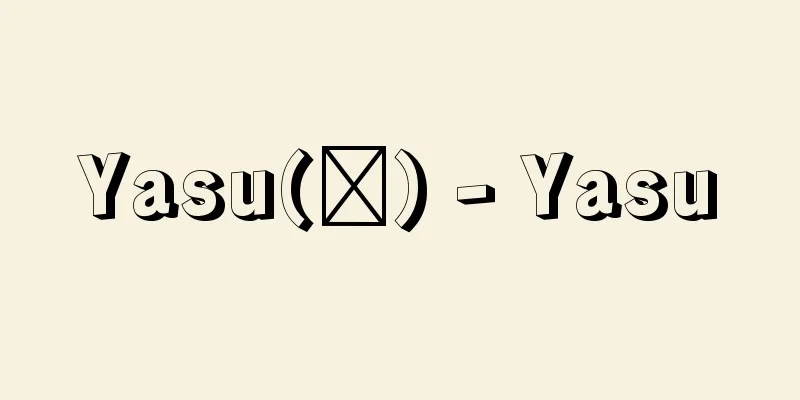Side rest - Kyosoku

|
A type of seating equipment. A piece of equipment to rest your elbows on and lean against when sitting. During the Nara period, it was recorded as a kyoshoku in the Todaiji Temple Offerings Book, and was handed down to the Shosoin Repository. It is referred to as a wakizuki and oshimatsuki in the Kojiki and Nihonshoki, and came to be called wakisuki in the mid-Heian period. There are two types of seating equipment: rectangular and curved. Relics of the former include the flower and butterfly lacquer kyoshoku (national treasure) housed in the Shosoin Repository and the Fujita Museum of Art (Osaka City), which is illustrated in the Ruiju Zoyosho, and this style was handed down as a court furnishing into the early modern period. Examples of the latter include those used for the wooden seated statue of Vimalakirti (Heian period, Important Cultural Property) at Ishiyama-dera Temple (Otsu, Shiga Prefecture) and Seiryu-ji Temple (Shiga Prefecture), the wood-grain carved side window of the storehouse at Kyoogokoku-ji Temple (Kyoto City) (Heian period, Important Cultural Property) and the side window of the storehouse at Kosan-ji Temple (Kyoto City) (Kamakura period). They are made of materials such as wood, bamboo, horn, rosewood and agarwood, and are decorated with lacquer and mother-of-pearl. Some have a floor covering covered with shitone, but in early modern samurai furnishings, they are lined with cotton. There are also box-shaped ones called yori-kakari, which have drawers on the sides and a top covered with cotton-filled velvet. [Goka loyal retainer] Source: Shogakukan Encyclopedia Nipponica About Encyclopedia Nipponica Information | Legend |
|
座具の一種。座ったとき、肘(ひじ)をかけ、もたれるための用具。奈良時代に挟軾(きょうしょく)といったことが『東大寺献物帳』に記載され、正倉院に伝来され、記紀に和豆岐紀(わきづき)、夾膝(おしまつき)とあり、平安中期に脇息というようになった。形式には長方形と湾曲したものとがある。前者の遺品としては正倉院と藤田美術館(大阪市)蔵の花蝶蒔絵(かちょうまきえ)挟軾(国宝)があり、『類聚雑要抄(るいじゅうぞうようしょう)』に図示され、宮廷調度として近世まで同形式が伝わる。後者のものに、石山寺(滋賀県大津市)や青竜寺(滋賀県)の木造維摩居士坐像(ゆいまこじざぞう)(重要文化財、平安時代)に用いたものや、教王護国寺(京都市)蔵の木目(もくめ)彫脇息(重要文化財、平安時代)や高山寺(京都市)蔵の脇息(鎌倉時代)などがあげられる。材質は木、竹、角、紫檀(したん)、沈香(じんこう)などを用い、加飾に蒔絵、螺鈿(らでん)を施している。用板に褥(しとね)を貼(は)ったものがあるが、近世の武家調度では、綿入れとなる。また、寄懸(よりかかり)といって箱形で、側面に引き出しを設け、甲板(こういた)を綿入れビロードで覆ったものもある。 [郷家忠臣] 出典 小学館 日本大百科全書(ニッポニカ)日本大百科全書(ニッポニカ)について 情報 | 凡例 |
>>: Kyoso Hanjaku - Kyoso Hanjaku
Recommend
Cryptomeria fortunei (English spelling)
… [Makoto Nishida]. … *Some of the terminology th...
Matsumo
[ Analipus japonicus ]. An edible seaweed of the A...
A great man - Odatemono
〘 noun 〙 (also "o-tatemono")① An outstan...
Lee, Bruce
Born: November 27, 1940, San Francisco, California...
Breadwinner - Daikokubashira
It is also written as Daikyokubashira. It is the ...
Styren resin
...A typical general-purpose thermoplastic resin ...
allogenic succession
…On the other hand, the influence of the environm...
Porridge stirrer - kayukakibo
…On the morning of January 15th, the Little New Y...
Adiabatic change - dannetsuhenka
A change that is maintained so that no heat flows...
Song form
...a term in musical composition referring to sim...
Difference sequence - Kaisasuretsu
A sequence of numbers in which the differences of ...
Embryology - embryology
Embryology is the study of the individual develop...
Christian Freedom - Kirisutosya no Jiyu (English spelling) Von der Freiheit eines Christenmenschen
This is the most excellent short work by the Germ...
Minamikoizumi ruins
Located in Tomizuka 1-2-chome and Furushiro 3-chom...
Modified polystyrene - modified polystyrene
...It is also reinforced with glass fibers. [Modi...


![Johannes [XXIII] - Johannes](/upload/images/67cd1b6280902.webp)






